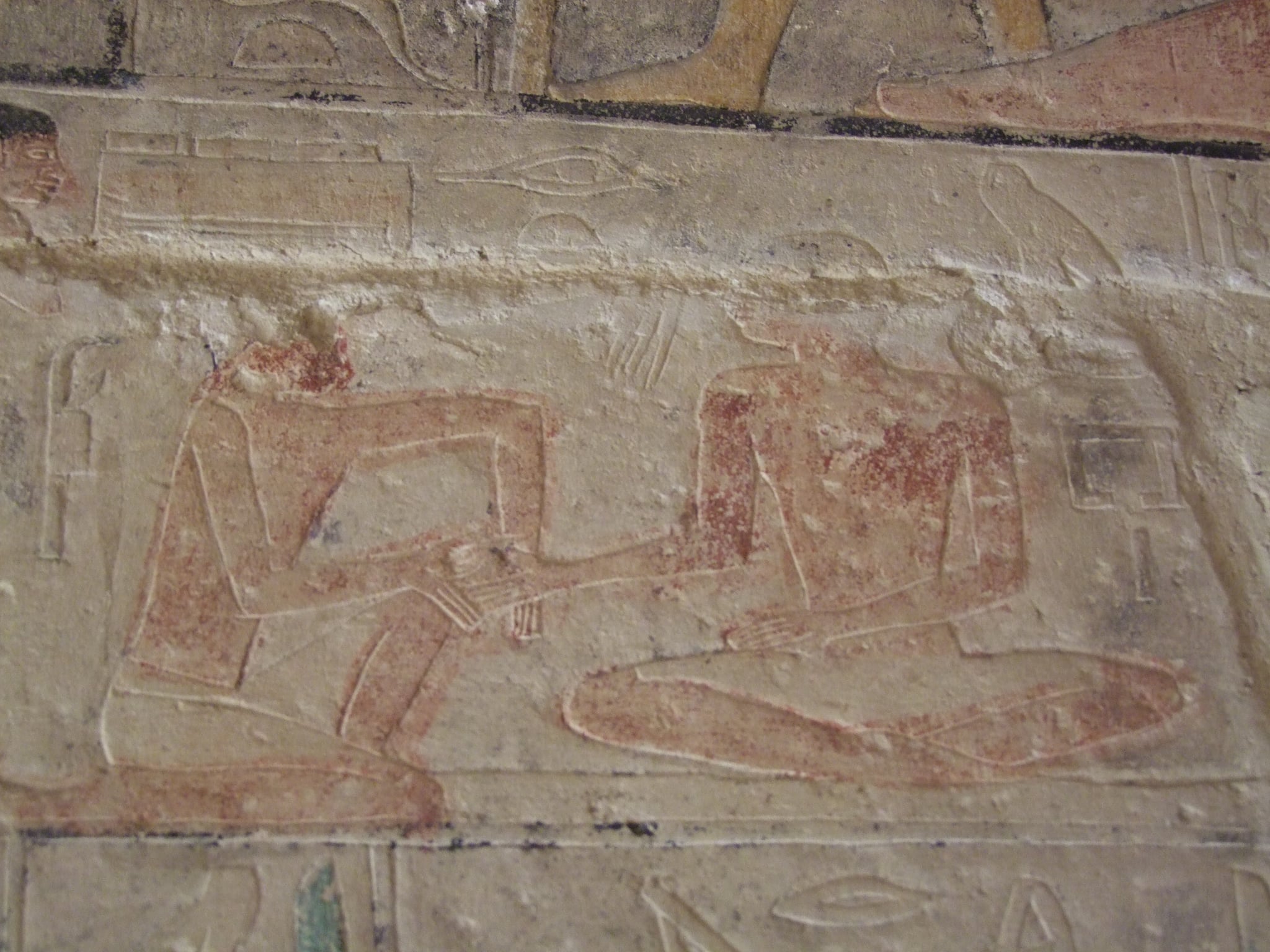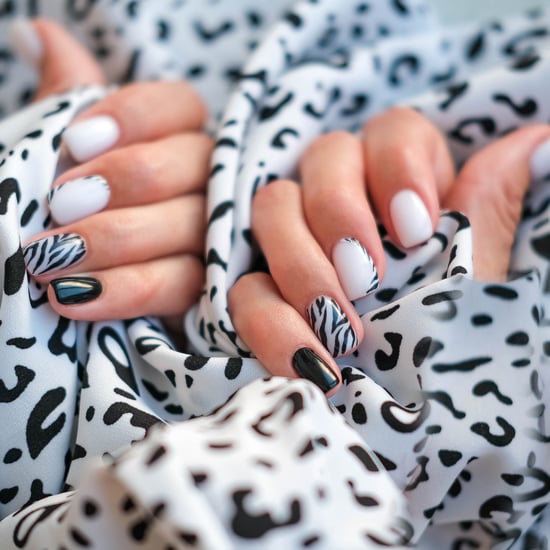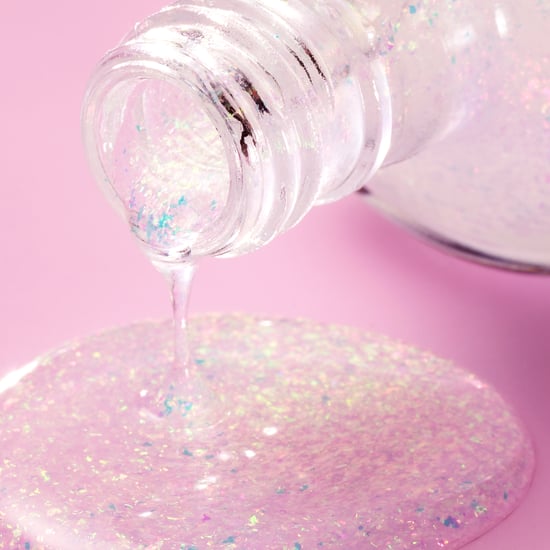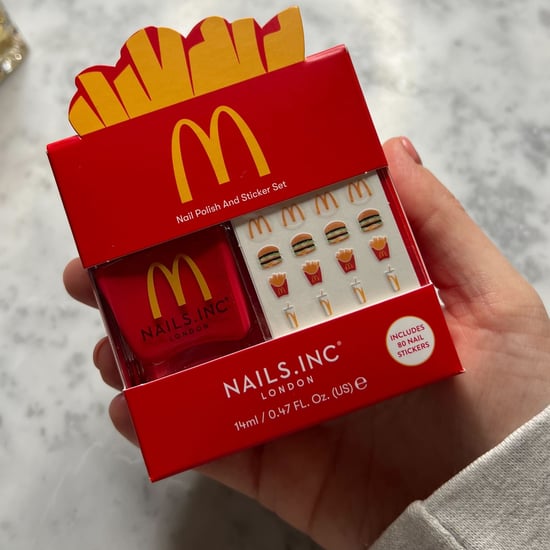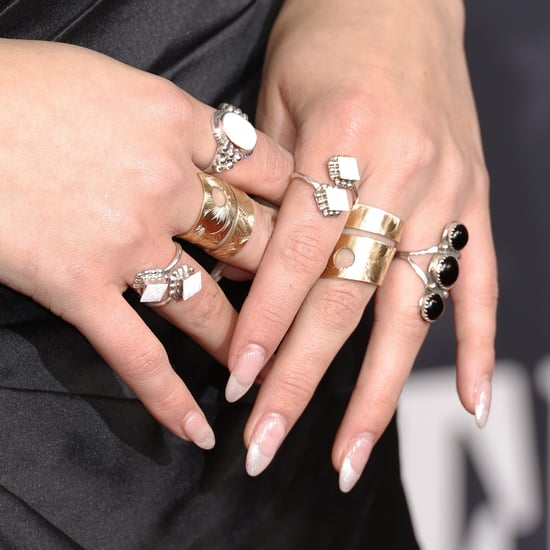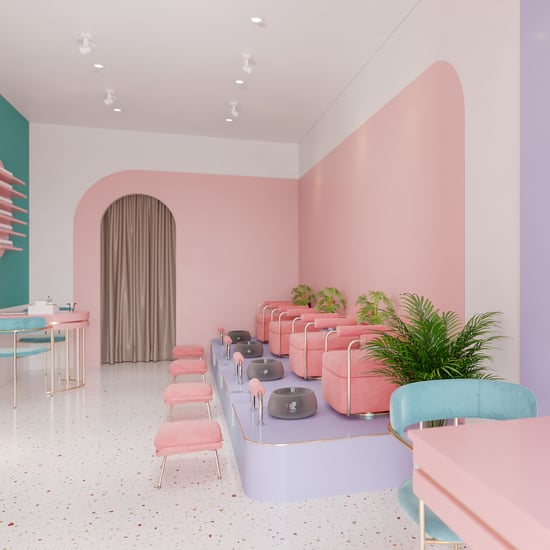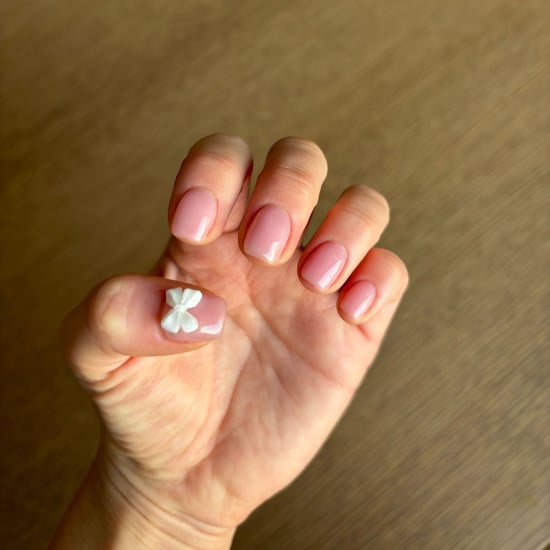The Evolution and Rise of the Modern Male Manicure
The Evolution and Rise of the Modern Menicure
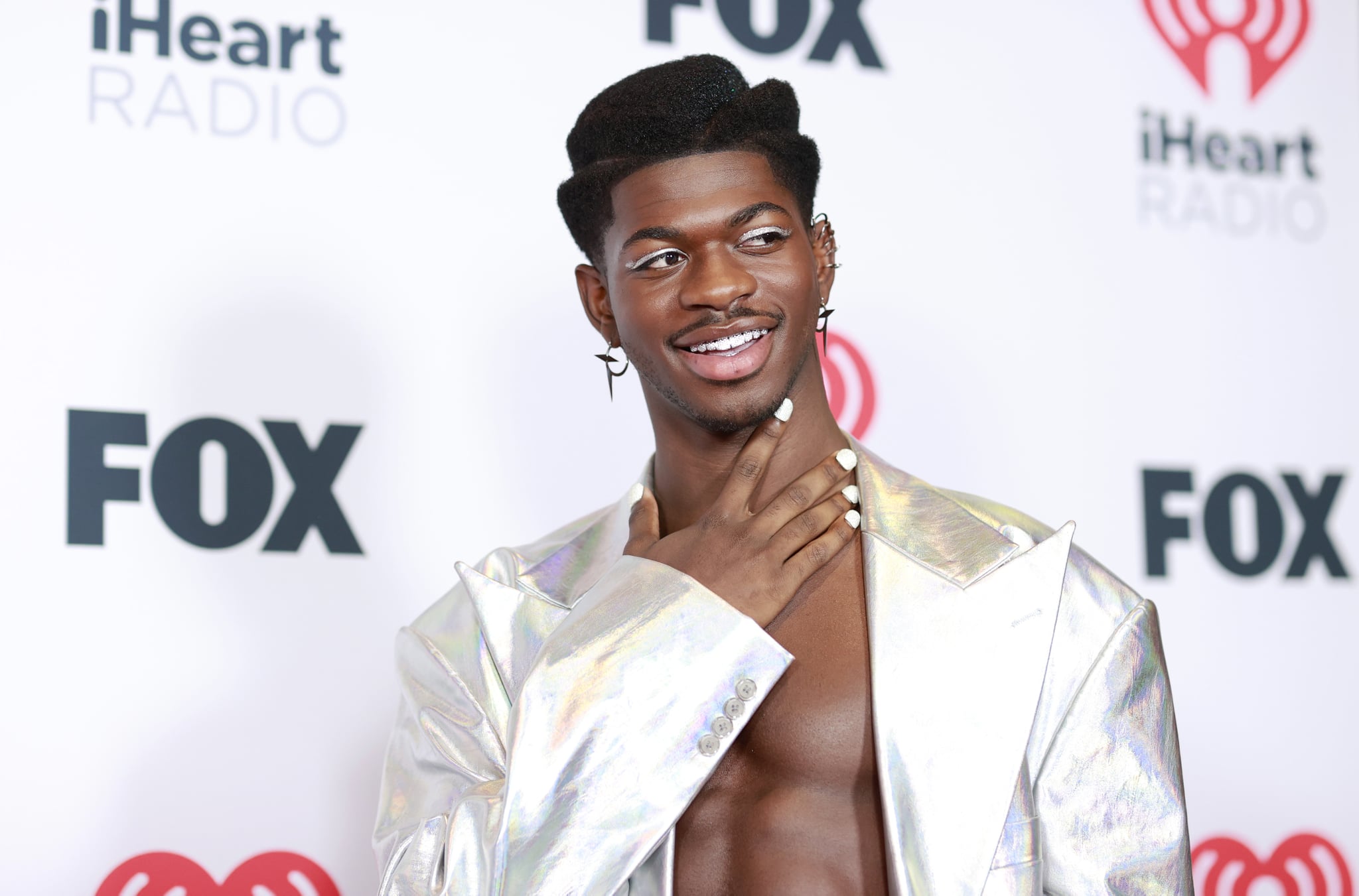
Image Source: Getty
Men wearing nail polish is not just a trend. It never has been and never will be. It's embedded in thousands of years worth of history — you just might not know it yet. Sure, in 2021 we saw more men with manicures on the red carpet than ever before. And by the end of the year, Harry Styles, Tyler the Creator, and Machine Gun Kelly all launched nail-polish brands within weeks of each other. But men caring for their nails didn't just appear out of nowhere. You can go back 30 years and point to Kurt Cobain's chipped red polish, or 50 years ago to David Bowie's press-on nails. You can even go back 4,000 years ago and find evidence of ancient Egyptian manicurists buried in noble tombs.
What has started to change this decade is that men are not only thinking of their nails as an accessory, the same way they would a watch or a necklace. They're also using their nails as a way to reject the age-old ideas of masculinity, champion gender-neutrality, and rewrite a new set of rules with one intention: creative expression and freedom.
We wanted to dig deep into how we went from warriors getting manicures before heading into battle to punk rockers sporting black polish as a rejection of societal norms, and how that eventually influenced some of the biggest hip-hop artists today. So, that's exactly what we did. Read on to discover how we got here — how each era changed the way men wore and accessed nail care — resulting in some of the most phenomenal manicures to date.
"No man of importance would permit himself to be seen in public unless he had been beautified."
Going Into Battle Called For a Trip to the Salon
The earliest records of men grooming their nails can be traced back to around 3500 BC when Babylonian warriors would prepare for battle with beauty rituals. "No man of importance would permit himself to be seen in public unless he had been beautified," David Yi wrote in his book, Pretty Boys: Legendary Icons Who Redefined Beauty, when speaking about findings at an excavation at the ancient Mesopotamian city of Ur. "Warriors adorned their nails with ground minerals as part of a pre-battle ritual designed to intimidate their enemies," according to a 2018 paper from The University of Rochester Medical Center.
Image Source: Elizabeth Frood. Manicure scene taken from Niankhkhnum and Khnumhotep's tomb
Egyptians Had Their Favourite Manicurists, Too
There are also early indications of ancient Egyptian men taking care of their hands and feet. "A number of Old Kingdom (c. 2575-2150 BCE) elite tomb chapels include scenes of men receiving nail treatments," Elizabeth Frood, associate professor of Egyptology at the University of Oxford told POPSUGAR. In the Old Kingdom, there were numerous titles (roles) connected to the care of the king's body, which included a manicurist. In all of these scenes showing the manicurists, it is men who receive and give the treatments. "Considering the potency and power of the royal body, individuals able to touch him and transform his body must have had extremely high status simply through their capacity to perform these actions," Frood explained. "Their status is also indicated by the fact that some have monumental and richly decorated tombs."
As with many things in ancient Egypt, nails were also dressed up for the afterlife. Little gold caps were placed fingers and toes, "however this is less about display of the nails in particular, and more about the overall transformation and divination of the body," Frood added.
The two most famous royal manicurists of the Old Kingdom were Niankhkhnum and Khnumhotep (pictured here), who were most likely brothers (possibly twins or perhaps lovers), and shared a tomb complex at Saqqara. "The displays of intimacy between them have also led to suggestions that they may have been a gay couple, and so their story has entered into LGBTQ+ discourses for the ancient world," said Frood, which Professor Richard Parkinson further explains in A Little Gay History: Desire and Diversity across the World.
These Old Kingdom scenes of grooming and displays of manicurist roles largely disappear from later ancient Egyptian periods, which in itself is an interesting development to Frood. "I'm sure these practices retained their salience, as evidenced by the care to depict elite individuals with neatly trimmed finger and toe nails on their statues and in two-dimensional representation — also a likely status marker," she explained. The New Kingdom scribes were proud of their soft, delicate limbs and hands.
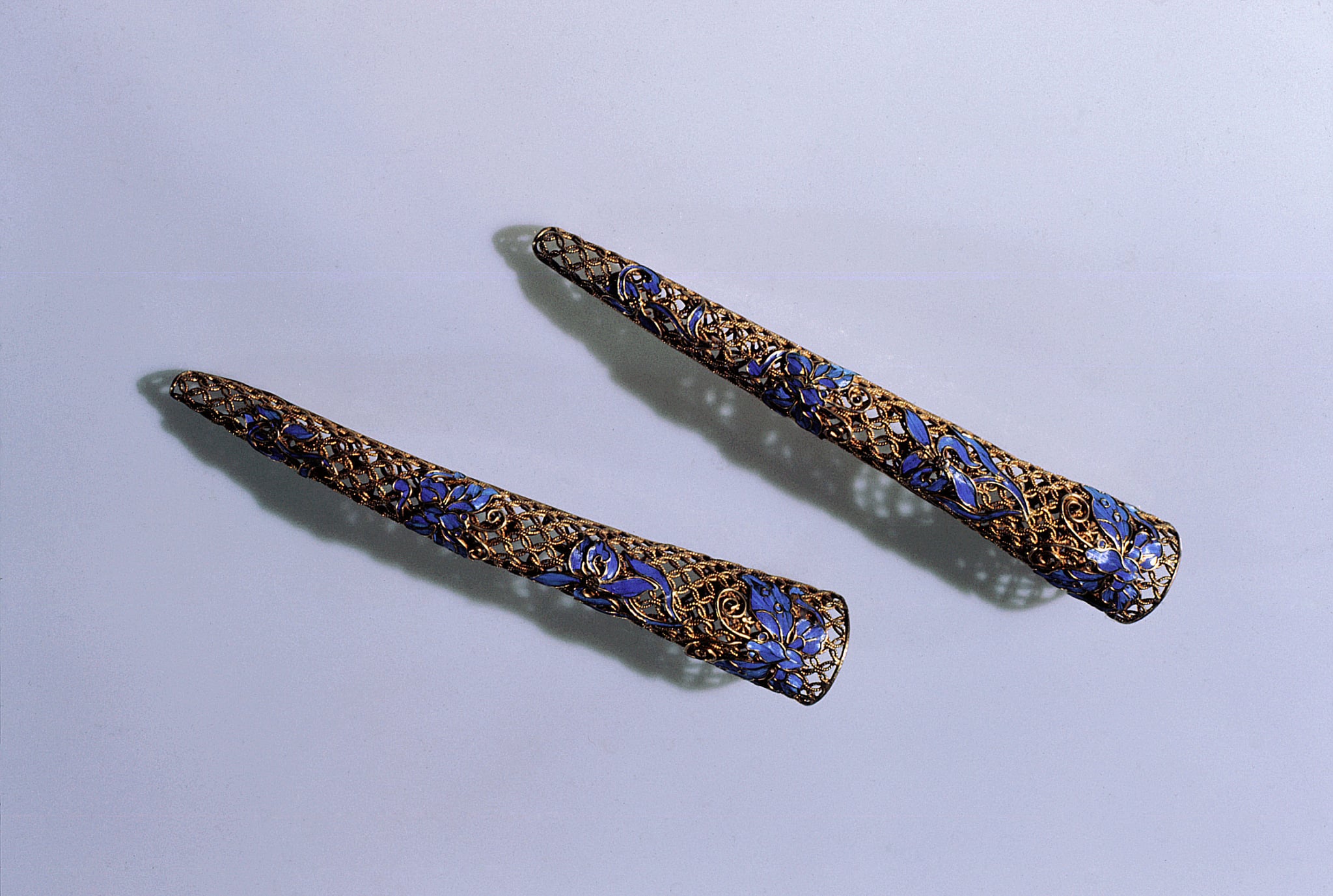 Image Source: Getty
Image Source: Getty
You've Got the Ming Dynasty to Thank For Your Gel Extensions
The Ancient Egyptians focused on detailed nail care. Farther east, however, men were focused on extreme nail length, a practise that originated in the Ming dynasty but became popular in the Qing dynasty. Extreme nail length and guards were used to signal elite status, as they were a "a clear marker that he or she performed no manual labour", author Suzanne E. Shapiro explained Nails: A Story of the Modern Manicure.
History shows us that in the ancient world, care for nails and feet was very much a part of men's general grooming routine; one that often helped them display their wealth , strength, or status. In all of my research, I could little information on men's nail grooming habits beyond the ancient era (perhaps a result of colonialism and the increased influence of Western Europe over the world?). When people starting beautifying their nails again in the 1900s, the focus was primarily on women. Men simply helped women achieve these newly forming beauty standards, whether through new inventions or the creation and marketing of beauty brands.
The Red Polish Boom That Didn't Convince All Men
Fast forward to the 1930s and the story of men's attitudes towards nail care was a very different one, with the focus predominantly on men helping women use beauty to enhance their appearance versus their own. There was a large wave of anxiety for women being seen as lower class if their cuticles weren't seen to; and many new products on the market helped "alleviate" these worries and uphold this standard.
At the same time, brothers Charles and Joseph Revson, along with chemist Charles Lachman, developed Revlon's first cream nail enamel that was made from pigment versus dye, allowing the polish to be fully opaque. Revlon created a variety of colours (and before Revlon, dye-based polishes were available in a variety of hues), but the biggest nail colour trend of the 1930s was undoubtedly red. But as reported in Nails: A Story of the Modern Manicure, it seems that a lot of men weren't keen on the bright red polish boom. "For God's sake do something about bright red nail polish. We wish to high heaven you would throw the damn stuff in the ocean," one male college student said in a 1935 survey.
For men in the first half of the 20th century, the pressure and focus was on the woman in their lives upholding certain beauty (and nail) standards. "Obtaining and keeping a man had always been part of the gospel of self-beautification, and now it seemed the much more noble a duty as men were sent off to war," explained Shapiro.
Vietnamese-Owned Salons Created a New Wave of Accessibility
The attitude that nails being cared for outside of the home was reserved for the higher class changed with a group of Vietnamese women and the help of an unlikely star: Tippi Hedren. As part of her philanthropic efforts, the Hollywood actress visited a Vietnamese refugee camp in California in 1975 and was determined to find vocations for the women in the camp. Hedren recalled the women being fascinated by her manicured nails, so she decided to fly in her personal manicurist to teach the craft to a group of 20 of the women refugees. Today, the US nail industry is dominated by Vietnamese Americans who have carved out a lucrative career as nail salon owners. These salons forever changed the way both women and men access and enjoy nail art in the US and worldwide.
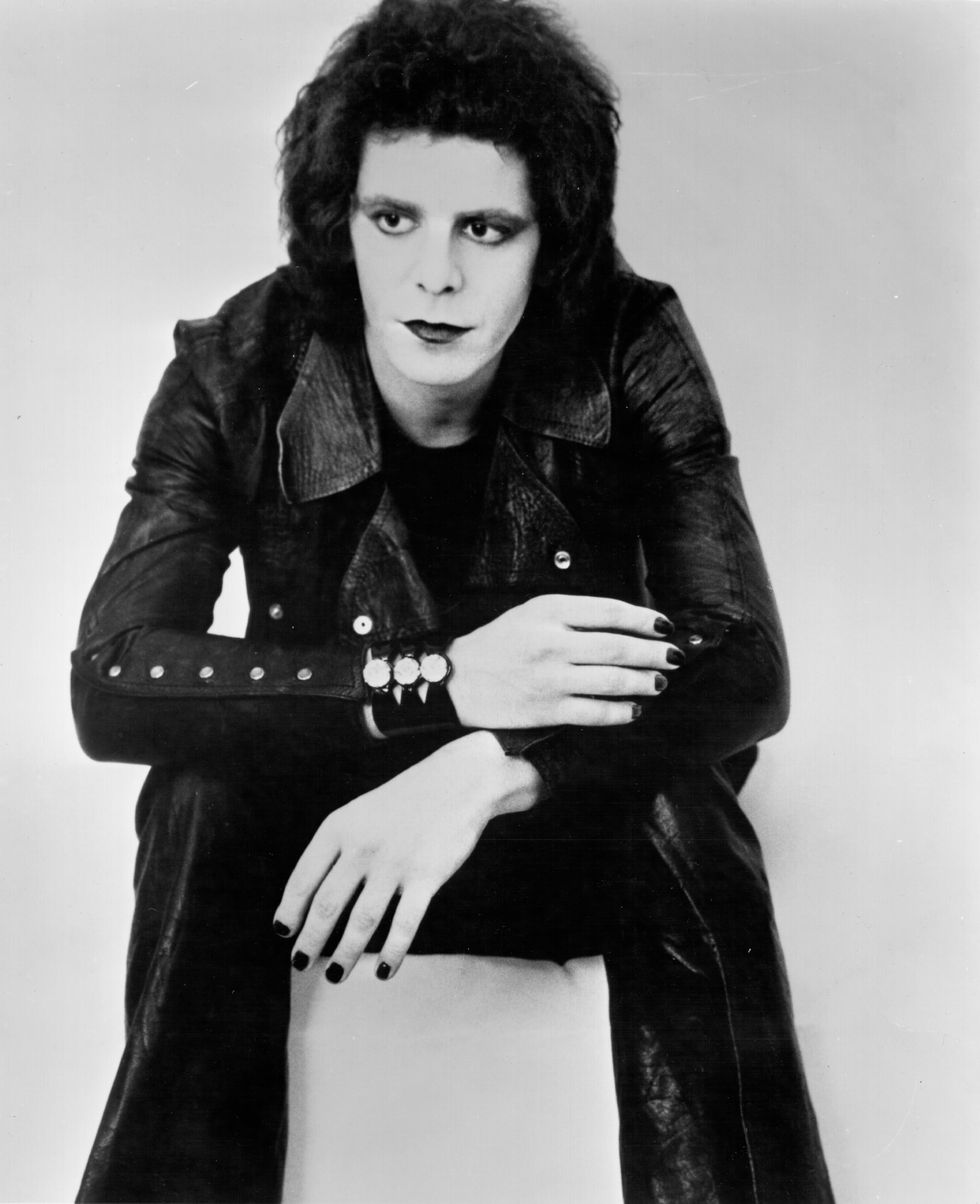 Image Source: Getty
Image Source: Getty
The '70s and '80s Set The Scene For the Menicure
It was in the 1970s and '80s that we finally start to see men painting their nails again, and a lot of it has to do with the music and counter-culture movements of the time, from the punk rock to the New Romantic movement. With the punk rock scene's unisex approach to beauty and clothing, "it was the experimental, liberal attitude towards fashion that allowed nail art to catch on in the '70s", according to Nails: A Story of the Modern Manicure.
"It was the experimental, liberal attitude towards fashion that allowed nail art to catch on in the '70s."
It was also that really influential people were doing it. Musicians Lou Reed, Iggy Pop, and Robert Smith all rocked painted nails with jet black being their colour of choice. Oftentimes, the paint was chipped as perfection didn't matter here — the visibility did. Unlike today, it wasn't the manicure or the specific nail art these men cared about. The important part was that a man was wearing nail polish in the first place. One look at Adam Ant, Freddie Mercury, and Prince was all the evidence people needed at the time to understand that nail polish needn't be reserved for women. David Bowie took it one step further by experimenting with press-on nails, which was a bold move at the time. Bowie was the Godfather of experimentation, serving as an especially important icon for men when it came to breaking free of society's binary beauty conventions.
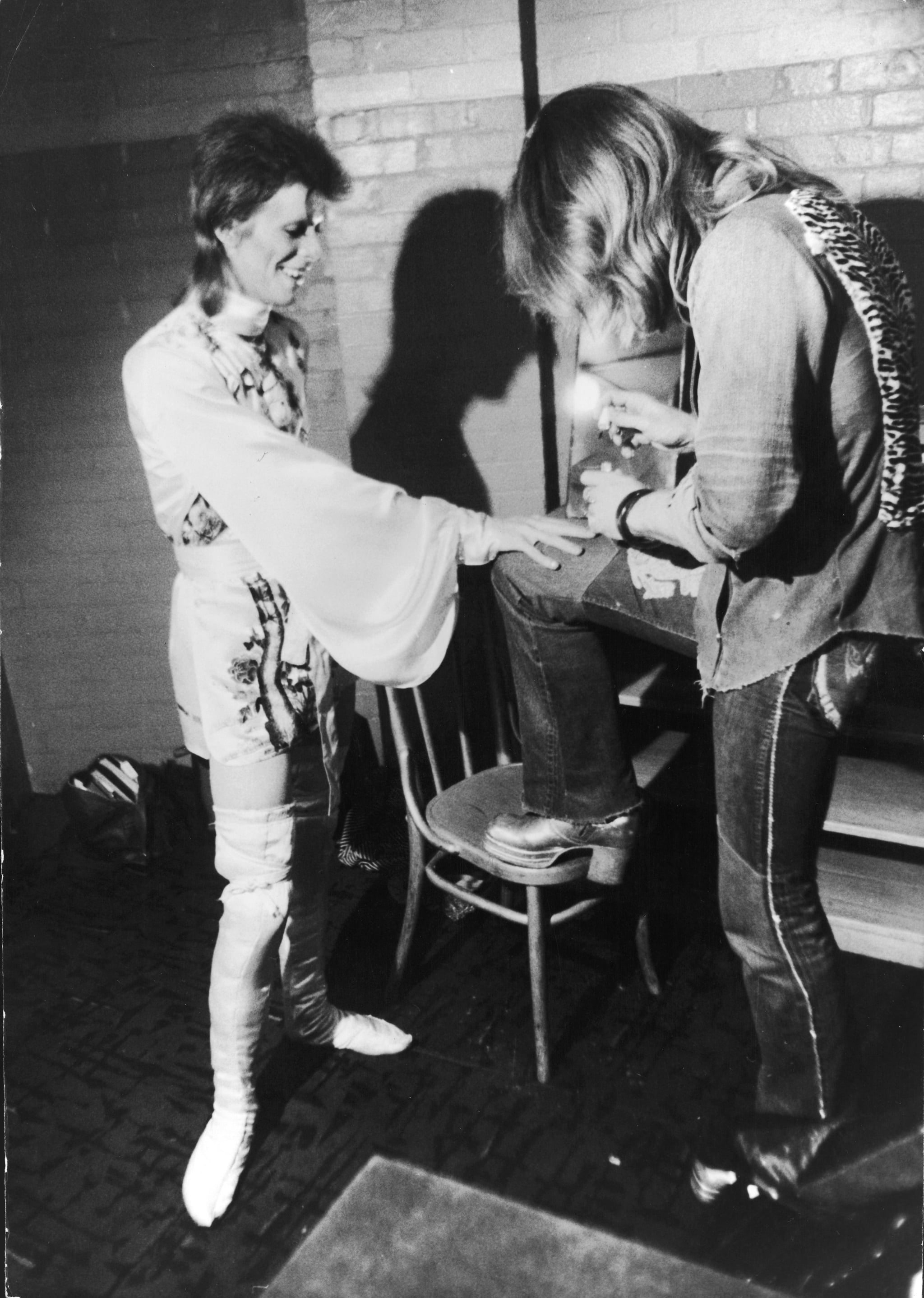 Image Source: Getty
Image Source: Getty
During these decades, music was such an integral part of a young person's identity and often a form of rebellion against the way of life of their parents and grandparents. Nail polish was one aspect that gave men an extension of displaying this new-found, often rebellious identity.
The Vital Role of Black Culture in the Nail Industry
Black culture pushed boundaries and a new era of nail art (which as a whole topic is beyond the scope of this particular article). In the 1980s, American track and field athlete, Florence Griffith Joyner (Flo-Jo) was a pioneer in going against the status-quo of what was expected of an Olympian. "In certain cases, people like Flo-Jo were seen as unprofessional, the discourse of that conversation became extremely important as time has progressed," said Taja Slydell, co-founder of nail brand IV Kulture. "Now, what we're seeing is an equilibrium where the conversation, the culture, is colliding, and it's not seen as unprofessional anymore. It's seen as a part of personality."
No one had quite as much personality as former basketball player Dennis Rodman. Famous for his vibrant hair and painted fingernails (and sometimes controversial behaviour), Rodman's career started the late '80s and lasted until 2006. In 2013, he expressed his love for nail art on Twitter in an exchange with a fan, writing: "I love to paint my nails. Nothing wrong with that. Be you. Always." Rodman's passion for beauty played an important role in the manicure scene and definitely helped sow the seeds of a more gender-neutral approach to nail art.
 Image Source: Getty
Image Source: Getty
The '90s Were a Peek Into What Was to Come
Punk gave way to grunge in the 1990s, but rock musicians continued to sport nail polish as a way to rage against the machine. In fact, during this period, men's manicures became more deliberate and the colour palettes widened — Nirvana's Kurt Cobain wore red polish, Pearl Jam's Eddie Vedder favoured metallic shades, and Billie Joe Armstrong liked to mix and match different hues. One thing that didn't change? Chipped polish still reigned supreme.
The '90s is when we see a clear merge of the '70s punk influences with this new age of experimentation. It not only serves as a clear indication of what was to come in the 2000s and beyond, but it also proves that the modern man's manicure didn't emerge out of the blue.
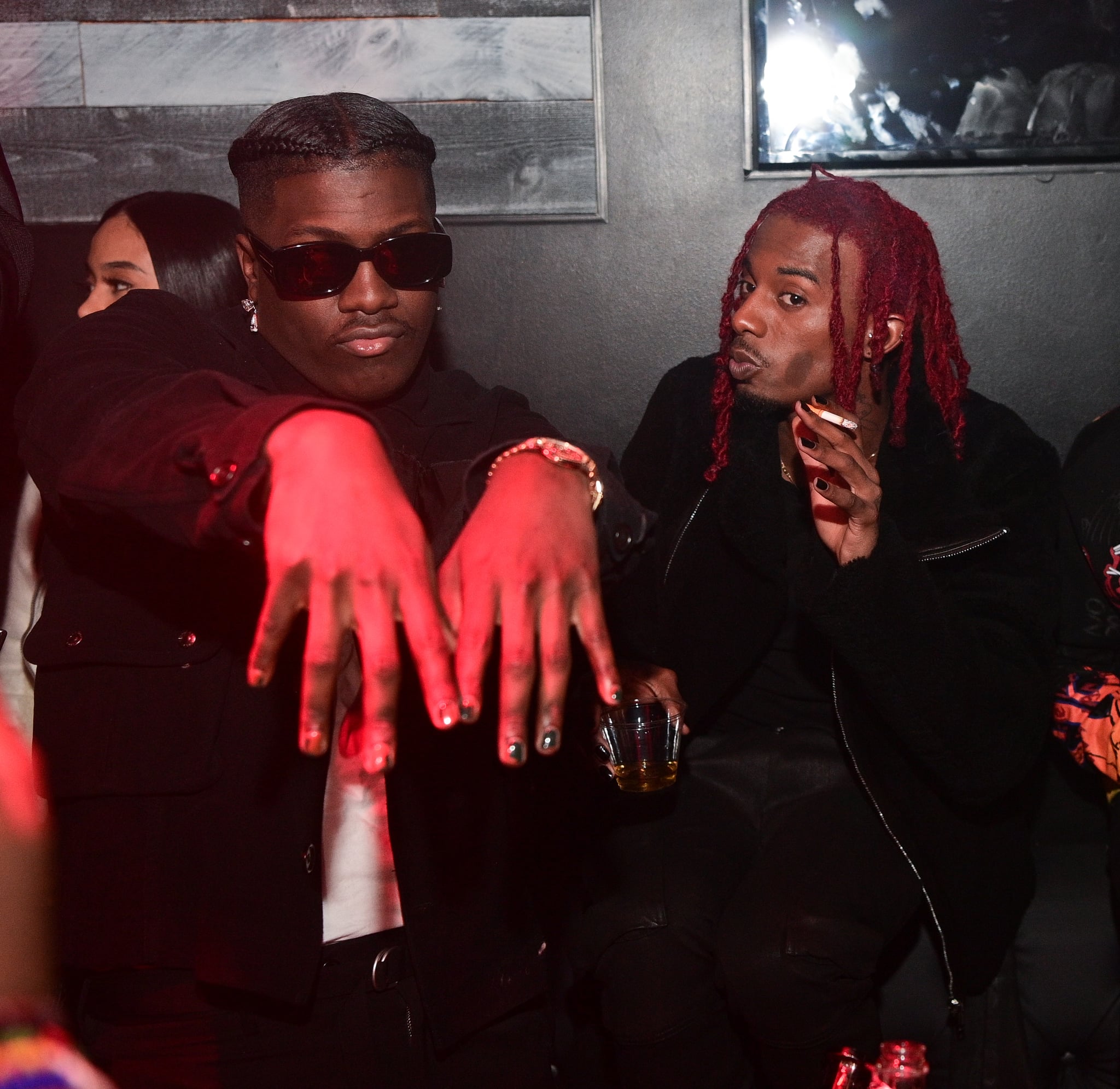 Image Source: Getty
Image Source: Getty
Rappers Entered the Nail Chat and Changed the Game
Male rappers and singer-songwriters entered the chat in the 2010s and the nail art world was forever changed — not to mention a heck of a lot more creative. Lil Yachty, A$AP Rocky, Lil Nas X, Gunna, MNEK, Tyler, the Creator, and Kid Cudi — the list goes on — are all known for wearing brightly-coloured nail polish and intricate, hand-painted nail art. Compared to the '70s, '80s, and '90s, the manicures are much more deliberate, well-thought out, and more collaborative, with these men often working with highly skilled nail technicians to bring their visions to life. "It wasn't often that you saw hip hop or rap artists enter the conversation," said Slydell. "We've seen rock stars wear polish, we've seen Harry Styles step outside the normalities of what we've been taught, but it's not often that you saw hip hop artists who have used their platform to make a statement," she added.
For these artists, their nails are a very intentional part of not only their on-stage persona, but also their music. "[A$AP Rocky] is a man who knows what he wants and where he's going," said Jenni Draper, celebrity manicurist who has worked with the artist. "He'll often have something to go along with a collaboration at the time, or smiley faces for the way he's feeling," she added. Manicurist Michelle Humphrey echoed this, speaking of the time she worked with MNEK. "He knew exactly what he wanted, which was a chrome gold gel manicure. Although they're not a regular client of mine, they mentioned that they get chrome manicures on the regular," she explained. "I love seeing that people are more comfortable about expression and understanding that products have no gender identity – they are for all," Yi told POPSUGAR.
"Men-backed investors are going to look at this industry under a new lens that they haven't before."
Lil Yachty spoke to GQ about how a simple manicure makes him feel, regardless of creative nail art. "I got compliments instantly. I felt clean. My nails weren't dirty and nasty. I felt more mature," he told the outlet, explaining that he was initially inspired by A$AP Rocky telling him to get a clear polish manicure.
Unfortunately, some of these men have received criticism for their love of nail art, and have been forced to defend their choices in the press. Puerto Rican rapper Bad Bunny, for example, went public back in 2018 about a Spanish salon turning him away from treatment for being a man. Earlier this year, Kid Cudi hit back at criticism of his pink nails, tweeting "Seems people really have a problem w me painting my nails", adding that he turned the comments off that particular post.
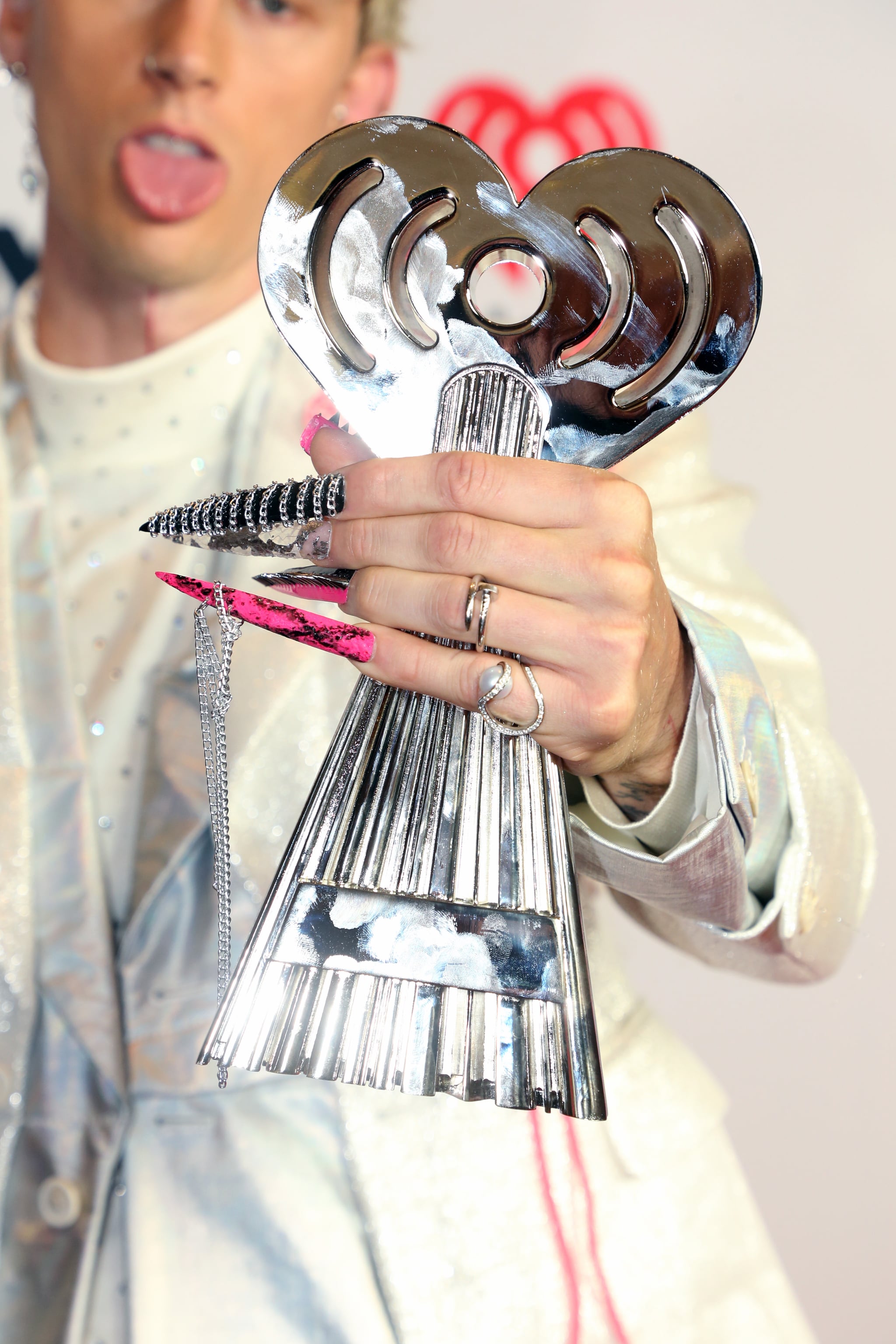 Image Source: Getty
Image Source: Getty
The Modern Men's Manicure Gets Redefined
With criticism comes change, and social media has been crucial for many artists sharing and influencing others to use nail art as a tool of self-expression and, in turn, breaking down gender stereotypes.
"Much like the '70s, fashion and beauty standards based on genders are obsolete [in the 2020s]," said Brittney Boyce, celebrity nail artist and founder of Nails of LA. In addition to the rappers mentioned above, Harry Styles, Machine Gun Kelly, Pete Davidson, Post Malone, and J-Hope are all nail polish wearing regulars. This very public experimentation from celebrities has no doubt influenced a wave of fans sporting a glossy manicure in day-to-day life.
"The future is actually taking more ownership of self-identity."
"Now that people are starting to self-identify with pronouns, we're taking away the gender constructions of masculinity and femininity and seeing that there's a gender-neutral space for that type of self expression," said Slydell. Salon owners and manicurists have seen this influence translate in everyday life, too.
"I've got more male clients than ever right now," said Humphrey. "Most are requesting gel manicures with designs so they can keep them for a few weeks. I'm also seeing an increase in men's manicures on my "For You" and "Explore" pages, which is great to see," she added.
South Coast-based salon-owner Jaz Moger said that whilst her client base is predominantly women, she has had an increase more recently in people asking about men's manicures. Explaining that "Nail art is just another form of art on our bodies. No different to a tattoo. Unlike a permanent tattoo, nail art can be chosen based on your outfit or your mood and it doesn't matter if you change your mind after a few days because it can be changed. There's no real commitment, which is what I love about it."
"After featuring on the 85 South Show podcast, which is pretty much a male-dominated show, we definitely saw an influx of male clients," Tianna L. Hill, co-founder of nail brand IV Kulture revealed. "As a society, we're starting to undo rules or what we think were rules before. I think that the future is young and the future is extremely bright. The future is actually taking more ownership of self-identity," said Slydell.
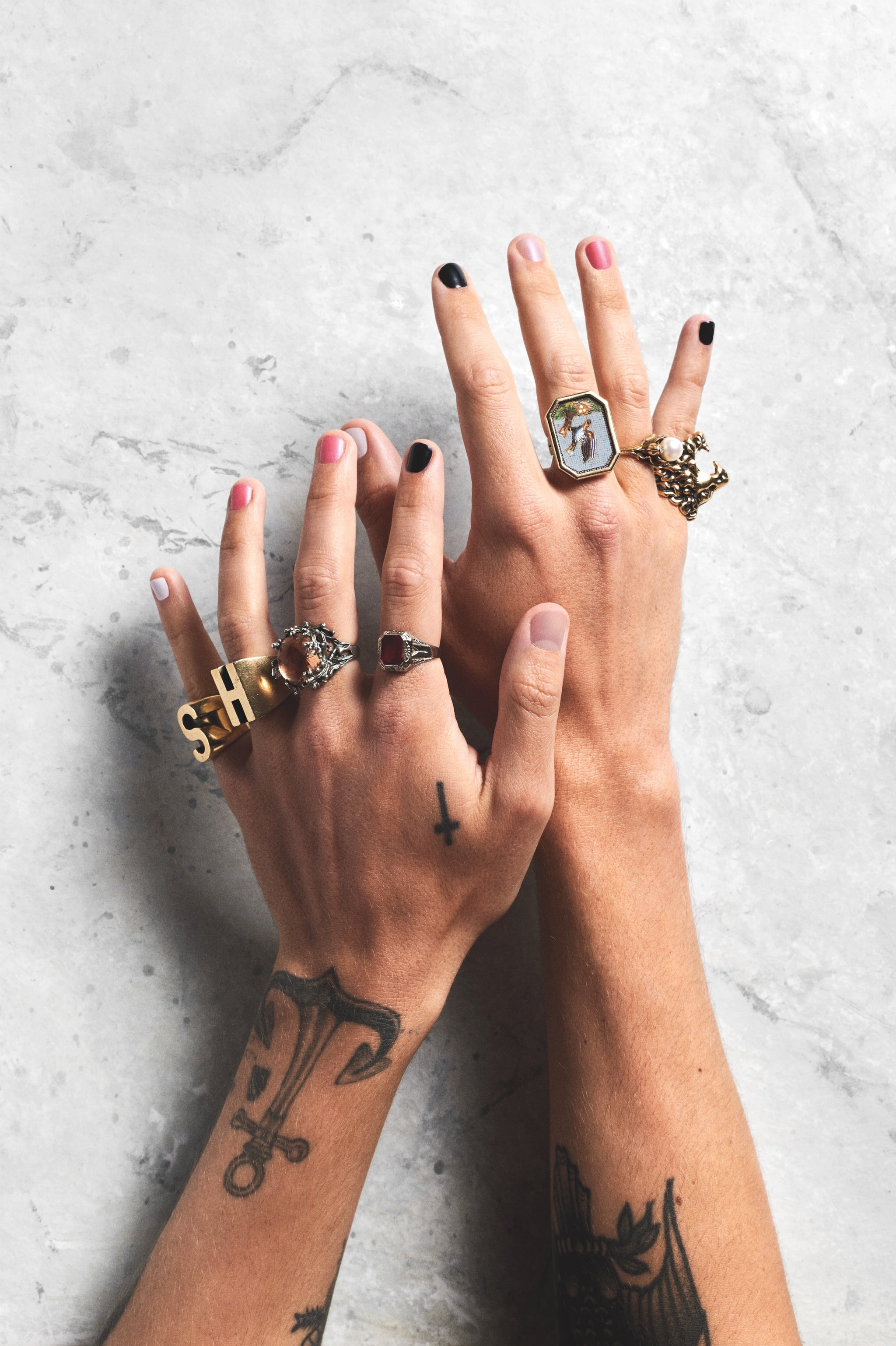 Image Source: Pleasing
Image Source: Pleasing
Men's Manicures Equals Big Business
The evolution of men wearing and experimenting with beauty (and nail polish specifically) has opened up a whole new world of opportunity within the £27 billion industry (in the UK alone). Lil Yachty debuted a nail polish brand Crete (though he is no longer associated with the brand), after learning a 17-year-old was suspended from a Texan school for wearing nail polish.
Most recently, Harry Styles founded nail polish and skin-care brand Pleasing, MGK launched his own nail brand UN/DN LAQR, and Tyler, the Creator, launched Golf le Fleur, a beauty and accessories brand selling nail polish, fragrance, and more. Just this month, Pete Davidson and MGK starred in a Calvin Klein ad together featuring the two getting their nails done. "Once you look at it from a monetary perspective, more businesses, more men, more men-backed investors are going to look at this industry under a new lens that they haven't before," said Slydell.
See You All At the Salon
The evolution of the male manicure is vast and significant. It has transformed from a display of wealth and status in society into simply another source of self-expression that transcends age-old gender constructs. Yi summed up men wearing nail polish and exploring nail art in the most perfect of ways: "what can be more macho than such utter security in one's own authenticity, and a wholehearted belief in beauty and freedom of expression for all?"
Now, there's only one thing left to discuss: what shade shall we go for?
